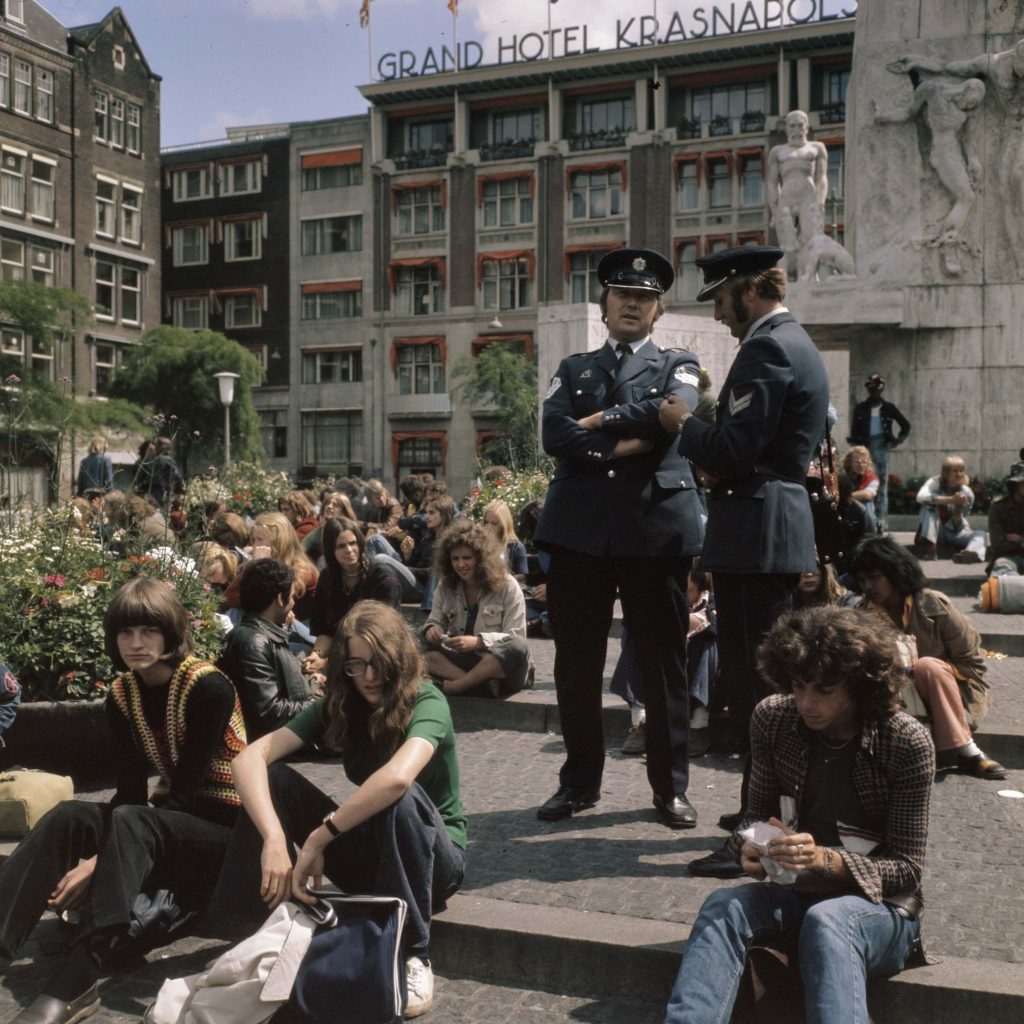From the 1970s onwards, the consumption of both legal and illegal narcotic substances has become increasingly widespread throughout European cities, a phenomenon that affects all social classes, genders, ethnicities, and cultural milieus. The challenges Europe faces in terms of drug use and regulation have become more and more complex in recent years. However, within both media and political discourses, it is predominantly the visibility of drug-related practices in public space that is considered most problematic.
These “deviant” practices are often linked to specific urban areas, such as run-down and blighted districts, low-income or immigrant neighborhoods, areas often seen as “spaces of fear” or marked as “ghettos.” The use and sale of drugs is usually associated with marginalized groups, such as homeless, foreign, and impoverished populations. Imaginaries of drug users evoke stereotypical and often highly gendered and racialized conceptions of what we call “narcotic subjects,” including “junkies,” migrants, sex workers, or dealers. The conceptualizations of these spaces and subjects are frequently formed irrespective of the actual role such places and populations play in the production of narcotic (sub)cultures. In reality, these (sub)cultures are far from homogeneous and involve a diversity of narcotic subjects, from drug tourists at raves to children witnessing drug use in their neighborhoods, from white collar professionals to activists.
This project positions these geographies, perceptions, and imaginaries as catalysts that trigger public discussions regarding what forms of practices are desired and acceptable in public space. By raising contentious issues such as morality and fear – as well as othering and stigmatization – these imaginaries stimulate debate on larger social issues such as exclusion, deviance, and integration. Moreover, they play a crucial role in legitimizing and directing state interventions, from policing to planning to public health directives. In the 1970s, there was an expansion of drug-related policies in many Western European cities, all of which aimed to control specific spaces while disciplining, rehabilitating, or expelling their users. Today, “zero tolerance” policies are increasingly regarded as ineffectual – or even counterproductive. For the past decade or so, different strategies have been mobilized, such as harm reduction and urban design interventions. Significantly, we argue, these shifts are tied to the changing imaginary geographies of European cities, as their stigmatized spaces are often becoming integral to touristic landscapes and urban identities, particularly within the “creative industries.”
Drawing on six case studies across nine European cities, this project adds an important dimension to the study of narcotics in public space by shifting focus to the spatial practices of drug use itself, starting from the realization that drug use is always a “practice of a body in space” (Duff 2007). Analyzing the spatialized rituals, discourses, and realities involved in cultures of drug use allows us to understand when and why drug use in public space becomes contested, regulated, or facilitated in the urban environment. This perspective is important not only for researchers, but also for community organizations, policy-makers, activist groups, and users themselves. The governance of the narcotic city, we argue, is essential to the production and control of public spaces, and crucial to historical and present-day forms of urban exclusion, marginalization, and integration.
Research Questions and Lines of Inquiry
To understand the historical dynamics and contemporary formations of urban drug cultures in European cities, we will explore the imaginaries, practices, and discourses of drug use. We begin by asking:
How have the conflicts around public drug use impacted the social and cultural fabric of European cities in the late 20th and early 21st century? What imaginary geographies of urban narcotic cultures have emerged? How have cities regulated contested sites of drug use? Which actors and social movements have questioned the politics of stigmatization and suggested alternative visions for urban space?
Heterogeneous in their makeup, drug cultures are closely related to – and to an extent, dependent upon – specific places and facilities. We will analyze how the spatialized moral order of cities has been challenged by public drug use over time, and how public space has been used to regulate urban drug use and policy.
The concepts, case studies, objectives, and research questions of Governing the Narcotic City have been developed along three interrelated lines of inquiry, focusing on the main dynamics and modes of production of narcotic spaces in European cities.
Public Spaces of Fear. Drug consumption in public spaces is often associated with fear, worry, disgust, or hostility. There are both real and perceived dangers for residents who suffer the consequences of drug-related crime and voice feelings of insecurity in neighborhoods where drug use is a visible part of life (Keane 2011). Drug consumers express fears as well; they fear for their health, as they in many cases live on the street or deal with criminalization and marginalization. We will explore how local governments, caregivers, civil society organizations, and consumers have attempted to overcome these fears by introducing measures aimed at regulating or abiding drug use in public space.
Public Spaces of Pleasure. Drug consumption in public spaces can also hold positive connotations when it is connected to relaxation, release, desire, sociability, or feelings of being “in the now.” Increasingly normalized, drug use has become a vital aspect of some important forms of urban tourism and public festivities. These developments are integral to the planning and image production of European cities. The CRP will examine how consumers and local governments have negotiated drug-related pleasures in public space, and how these have become important for urban competition and economic growth.
Public Spaces of Everyday Life. In addition to the emotions of fear and pleasure that have been voiced and employed regarding drug use in public space, drug use has increasingly become an integral part of everyday life in many European cities. Residents live next to drug users or find employment in drug-related establishments such as coffee shops or other parts of the drug-related tourism industry. The project will analyze how people live in narcotic spaces, “in the shadow” of stigmatized drug practices and criminalizing discourses.
